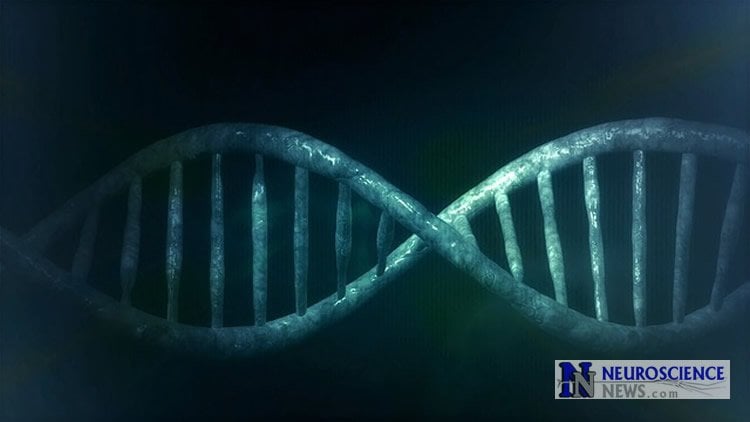Summary: A new study suggests carriers of a genetic mutation in the serotonin 2B receptor may be protected from obesity and insulin resistance.
Source: University of Helsinki.
University of Helsinki researchers have previously demonstrated that a point mutation in a gene of serotonin 2B receptor can render the carrier prone to impulsive behaviour, particularly when drunk. Now the research group has established that the same mutation may shield its bearers from obesity and insulin resistance, both of which are associated with type 2 diabetes.
Published in a recent issue of the Journal of Psychiatric Research, the study focused on the insulin sensitivity, beta cell activity and BMI of 98 Finnish men between the ages of 25 and 30, all of whom had been diagnosed with antisocial personality disorder. The results indicate that carriers of a point mutation in a gene of serotonin 2B receptor had a lower BMI and higher insulin sensitivity than persons without the mutation. Normally, men with low testosterone levels are more susceptible to metabolic disorders, but among carriers of the point mutation, this tendency was reversed – lower levels of testosterone increased insulin sensitivity.
The results also suggest that men in their thirties with antisocial personalities may constitute a risk group for insulin resistance, and consequently type 2 diabetes later in life.
“It is fascinating to think that this receptor mutation which has been passed through the chain of evolution would impact both the brain as impulsive behaviour and energy metabolism,” says psychiatrist, Dr Roope Tikkanen from the University of Helsinki, who led the study.
“We could speculate that the compound effect the mutation and testosterone have on energy metabolism may have been beneficial in the cool, nutrition-poor environment after the Ice Age, particularly for men with a high physiological level of testosterone – they would have survived with a lower calorie intake.
Simultaneously, the aggression associated with high levels of testosterone may have helped them compete for food.”

In our modern society with ample food, the carriers of the mutation who have normal or low levels of testosterone may be better protected from metabolic illnesses relating to obesity, such as type 2 diabetes.
“One would assume that the effect would be particularly pronounced in women, who naturally have lower levels of testosterone than men,” Tikkanen points out.
Over 100,000 Finns and more than 1,000 Finnish infants born every year are carriers of the point mutation in the serotonin 2B receptor. The intention is to study the national health implications of the results from the extensive FINRISKI research material through cooperation between Finnish, Swedish and American researchers.
“Our results will further highlight the importance of Finnish diabetes research,” Tikkanen states.
Source: Roope Tikkanen – University of Helsinki
Image Source: This NeuroscienceNews.com image is in the public domain.
Original Research: Abstract for “The effects of a HTR2B stop codon and testosterone on energy metabolism and beta cell function among antisocial Finnish males” by Roope Tikkanen, Tero Saukkonen, Malin Fex, Hedvig Bennet, Marja-Riitta Rautiainen, Tiina Paunio, Mika Koskinen, Rony Panarsky, Laura Bevilacqua, Rickard L. Sjöberg, Jari Tiihonen, and Matti Virkkunen in Journal of Psychiatric Research. Published online June 25 2016 doi:10.1016/j.jpsychires.2016.06.019
[cbtabs][cbtab title=”MLA”]University of Helsinki. “‘Aggressive Drunk’ Gene May Protect Carriers From Obesity and Associated Risks.” NeuroscienceNews. NeuroscienceNews, 10 August 2016.
<https://neurosciencenews.com/genetics-aggression-drinking-obesity-4820/>.[/cbtab][cbtab title=”APA”]University of Helsinki. (2016, August 10). ‘Aggressive Drunk’ Gene May Protect Carriers From Obesity and Associated Risks. NeuroscienceNews. Retrieved August 10, 2016 from https://neurosciencenews.com/genetics-aggression-drinking-obesity-4820/[/cbtab][cbtab title=”Chicago”]University of Helsinki. “‘Aggressive Drunk’ Gene May Protect Carriers From Obesity and Associated Risks.” https://neurosciencenews.com/genetics-aggression-drinking-obesity-4820/ (accessed August 10, 2016).[/cbtab][/cbtabs]
Abstract
The effects of a HTR2B stop codon and testosterone on energy metabolism and beta cell function among antisocial Finnish males
Herein, we examined insulin resistance (IR), insulin sensitivity (IS), beta cell activity, and glucose metabolism in subjects with antisocial personality disorder (ASPD), and (ii) whether the serotonin 2B (5-HT2B) receptor and testosterone have a role in energy metabolism. A cohort of subjects belonging to a founder population that included 98 ASPD males, aged 25–30, was divided into groups based on the presence of a heterozygous 5-HT2B receptor loss-of-function gene mutation (HTR2B Q20*; n = 9) or not (n = 89). Serum glucose and insulin levels were measured in a 5 h oral glucose tolerance test (75 g) and indices describing IR, IS, and beta cell activity were calculated. Body mass index (BMI) was also determined. Concentrations of the serotonin metabolite 5-hydroxyindoleacetic acid were measured in cerebrospinal fluid, and testosterone levels from serum. An IR-like state comprising high IR, low IS, and high beta cell activity indices was observed among ASPD subjects without the HTR2B Q20* allele. By contrast, being an ASPD HTR2B Q20* carrier appeared to be preventive of these pathophysiologies. The HTR2B Q20* allele and testosterone predicted lower BMI independently, but an interaction between HTR2B Q20* and testosterone lead to increased insulin sensitivity among HTR2B Q20* carriers with low testosterone levels. The HTR2B Q20* allele also predicted reduced beta cell activity and enhanced glucose metabolism. Reduced 5-HT2B receptor function at low or normal testosterone levels may be protective of obesity. Results were observed among Finnish males having an antisocial personality disorder, which limits the generality.
“The effects of a HTR2B stop codon and testosterone on energy metabolism and beta cell function among antisocial Finnish males” by Roope Tikkanen, Tero Saukkonen, Malin Fex, Hedvig Bennet, Marja-Riitta Rautiainen, Tiina Paunio, Mika Koskinen, Rony Panarsky, Laura Bevilacqua, Rickard L. Sjöberg, Jari Tiihonen, and Matti Virkkunen in Journal of Psychiatric Research. Published online June 25 2016 doi:10.1016/j.jpsychires.2016.06.019







